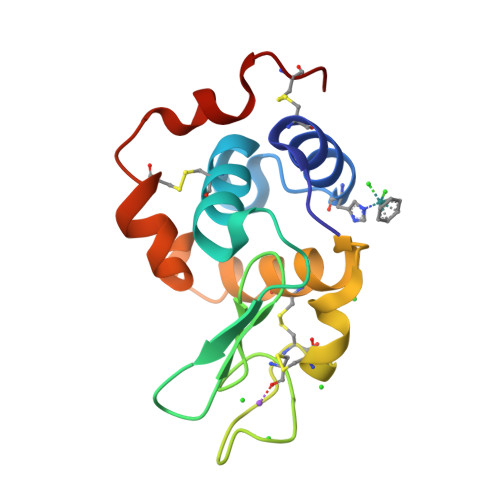Porous protein crystals as catalytic vessels for organometallic complexes.
Tabe, H., Abe, S., Hikage, T., Kitagawa, S., Ueno, T.(2014) Chem Asian J 9: 1373-1378
- PubMed: 24677803
- DOI: https://doi.org/10.1002/asia.201301347
- Primary Citation of Related Structures:
3W6A, 4J7V - PubMed Abstract:
Porous protein crystals, which are protein assemblies in the solid state, have been engineered to form catalytic vessels by the incorporation of organometallic complexes. Ruthenium complexes in cross-linked porous hen egg white lysozyme (HEWL) crystals catalyzed the enantioselective hydrogen-transfer reduction of acetophenone derivatives. The crystals accelerated the catalytic reaction and gave different enantiomers based on the crystal form (tetragonal or orthorhombic). This method represents a new approach for the construction of bioinorganic catalysts from protein crystals.
Organizational Affiliation:
Department of Synthetic Chemistry and Biological Chemistry, Graduate School of Engineering, Kyoto University, Katsura, Nishikyo-ku, Kyoto 615-8510 (Japan); Institute for Integrated Cell-Material Sciences), Kyoto University, Yoshida, Sakyo-ku, Kyoto 606-8501 (Japan).





















